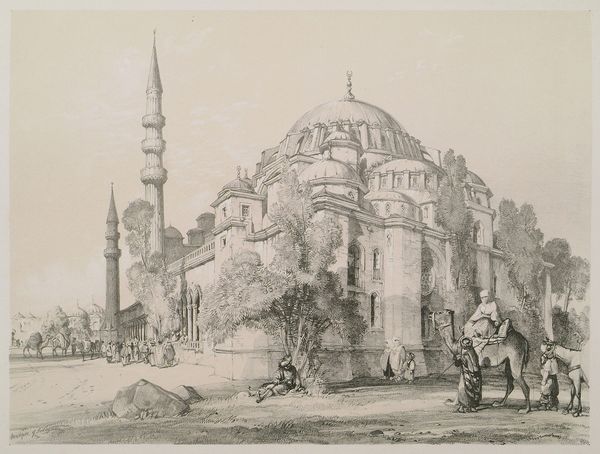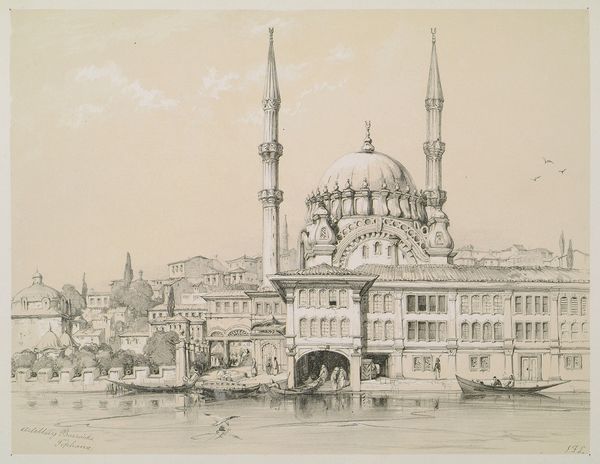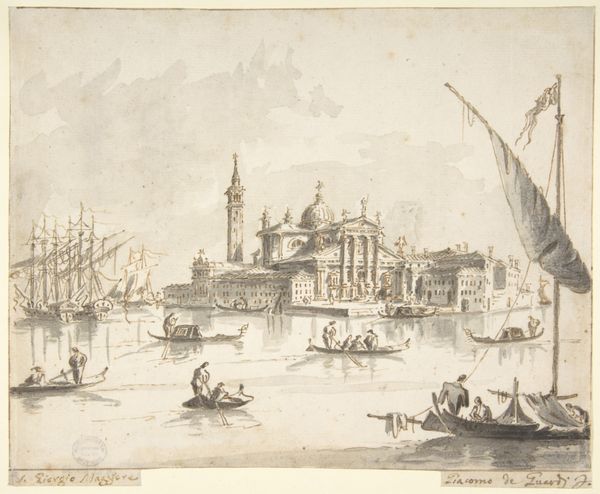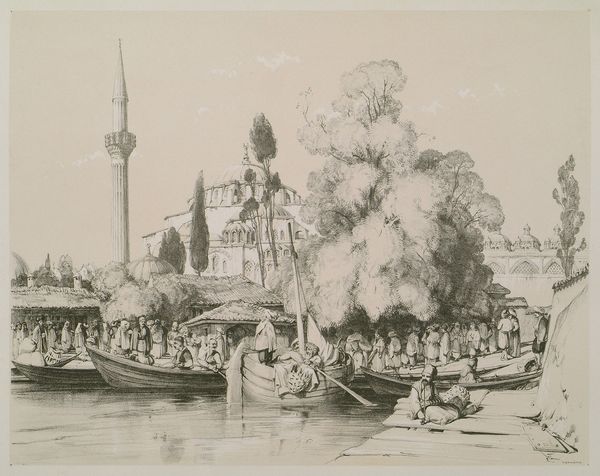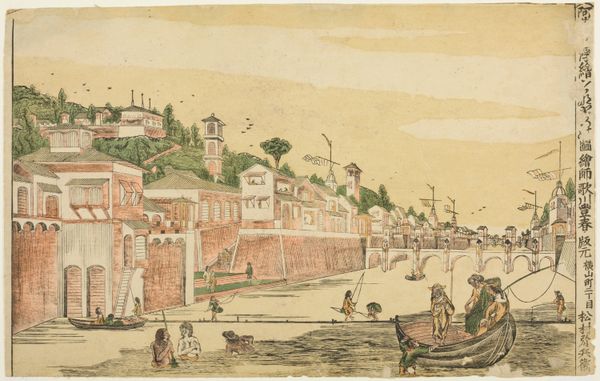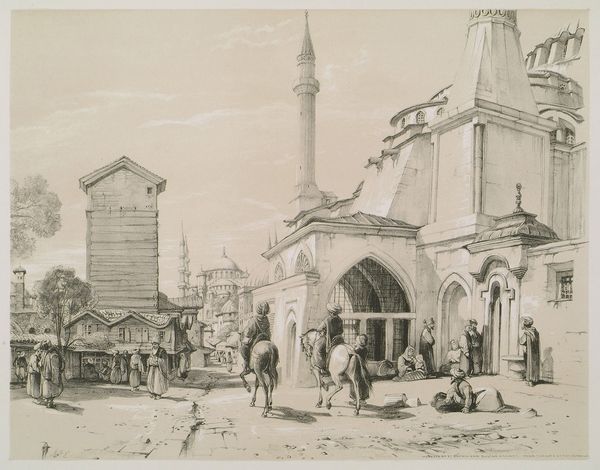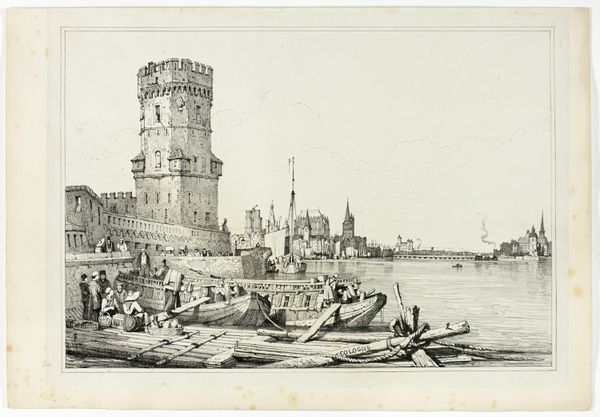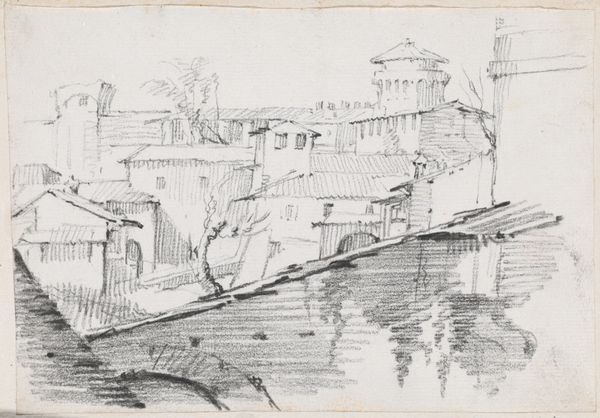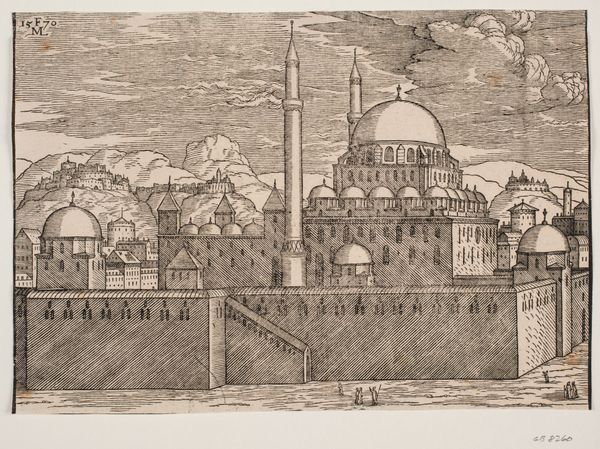
drawing, watercolor, pencil
#
drawing
#
toned paper
#
pencil sketch
#
watercolor
#
romanticism
#
pencil
#
orientalism
#
cityscape
#
watercolor
Copyright: Public domain
Curator: Looking at John Frederick Lewis's 1838 watercolor and pencil drawing, "Custom House, Constantinople," one is immediately struck by its delicate, almost dreamlike quality. Editor: Yes, it has a wistful atmosphere, like a half-remembered memory of a city. The soft, toned paper enhances that effect, lending an air of faded grandeur to the scene. How fascinating that he captures Constantinople at such a pivotal time in the city's history, well into the period of Ottoman reform. Curator: Indeed. Lewis, positioned here, captures not just a geographical location, but a powerful symbol of cross-cultural exchange, trade, and the allure of the Orient as perceived by Europeans. The Custom House itself would have been a nexus of all that. Notice the deliberate inclusion of various architectural features. Editor: The minarets of course, immediately signify Ottoman presence, but it’s interesting how they co-exist with elements that might feel more ‘Western’, representing that cultural mingling in the port city. The pencil sketches add to that raw sense of capturing a place in transition, almost journalistic. Curator: Absolutely, the drawing acts as visual reportage filtered through a romantic lens. Lewis employs a restrained palette. His primary intention, I think, is to illustrate, literally illuminate, a sense of place brimming with significance to the British imagination, not to replicate local colour. What do we learn about this persistent exoticising of the east? Editor: It certainly fuels a kind of Orientalist fantasy, romanticising the everyday bustle and inherent political dynamics into a picturesque scene for consumption. How much does Lewis participate in perpetuating that simplified narrative? Curator: It’s a question we must constantly ask ourselves. Lewis certainly plays with the aesthetics that Europeans have come to associate with Constantinople; minarets, bustling harbors. But one might argue that through close, attentive rendering of details – even if romanticized - he inspires engagement. There is nuance, not simple caricature here. Editor: It's certainly a detailed snapshot, or a 'sketch' of a historical moment, urging us to delve deeper into Constantinople’s multi-layered history, acknowledging both the beauty and complexity of cultural perception. Curator: Exactly. An artwork whose true meaning lives in the questions it poses rather than the assertions it makes.
Comments
No comments
Be the first to comment and join the conversation on the ultimate creative platform.



